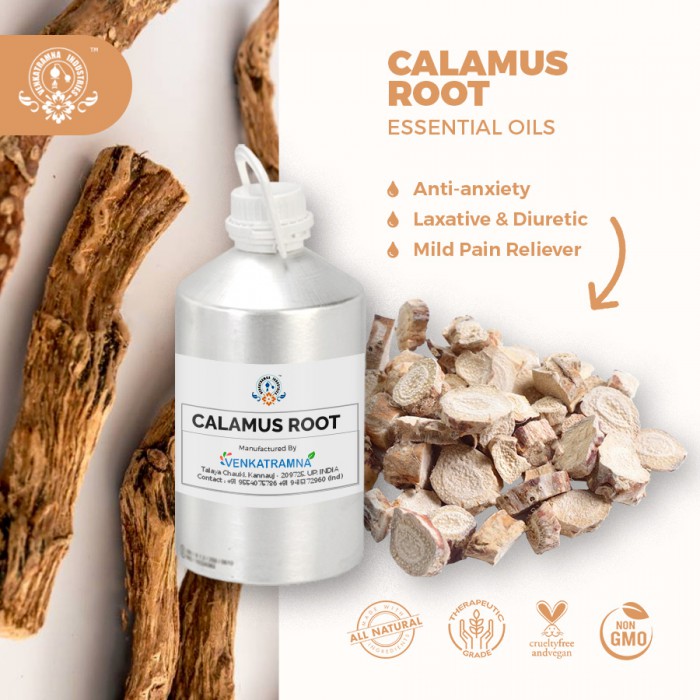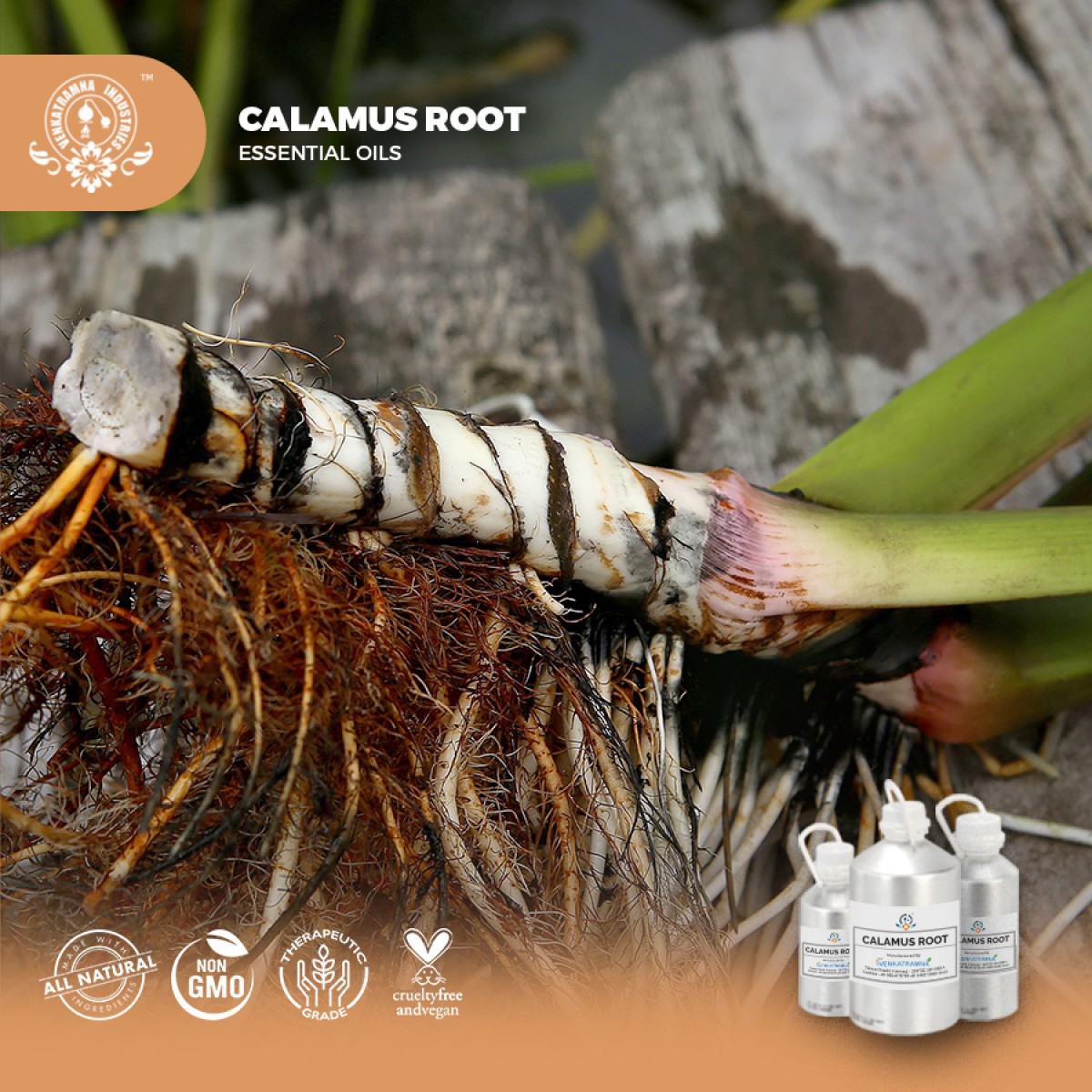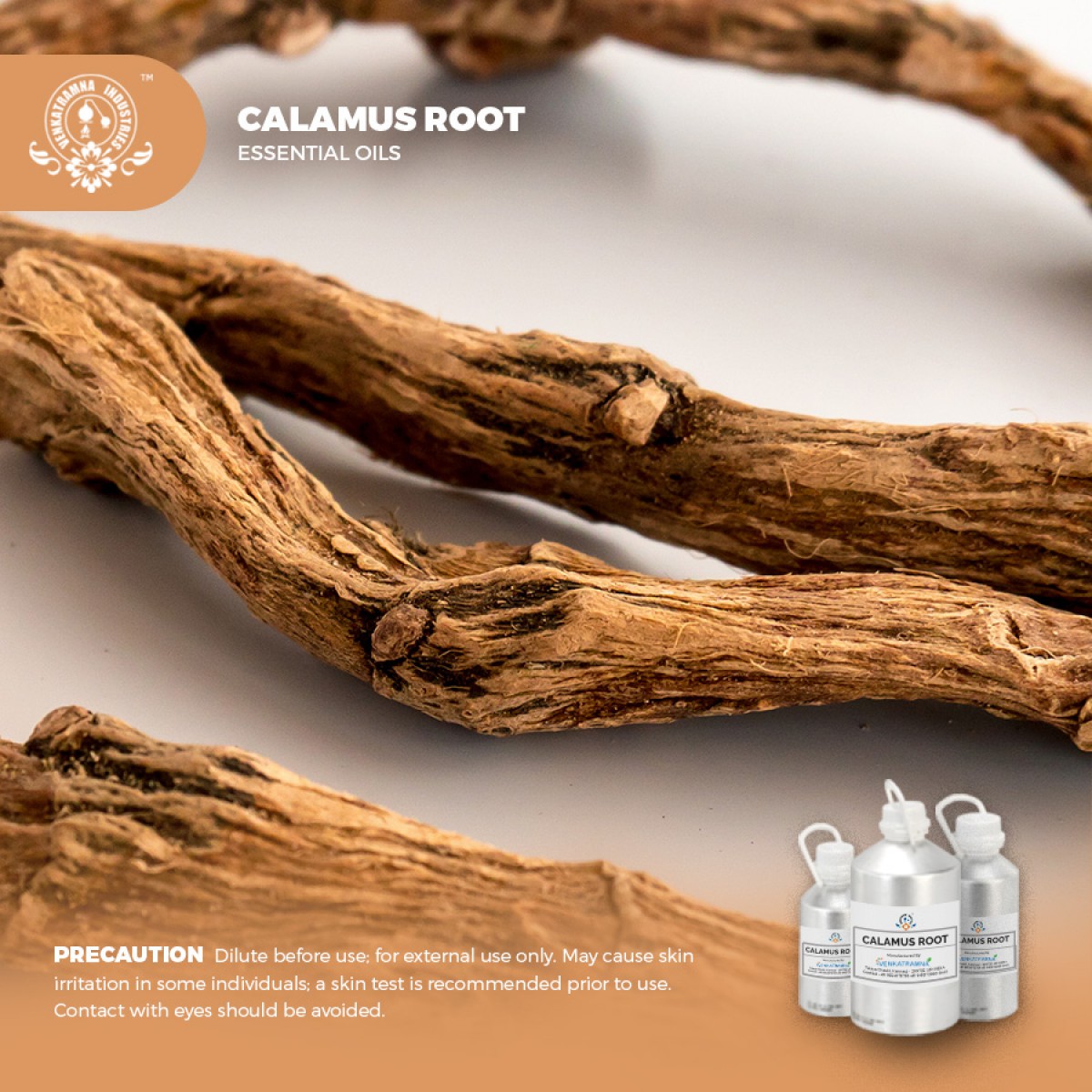Botanical Name: Acorus calamus Common name: Sweet Flag, calamus, flagroot, sweet cane Read More
|
Botanical Name: |
Acorus calamus |
|
Common name: |
Sweet Flag, calamus, flagroot, sweet cane, sweet grass,
sweet-root, sweet rush, Bach |
|
Plant family: |
Acoraceae |
|
Genus: |
?Acorus |
|
Appearance/Color: |
Pale yellow to yellow amber clear liquid |
|
Odor: |
Faintly sweet, waxy
scent with a base note and medium aroma |
|
Blends With: |
Lavender, tea
tree, rosemary, clary sage, geranium and marjoram. |
|
Origin |
India |
In Ayurveda Acorus calamus
is known as VACHA and publicly known as ?sweet flag or Bacha. This is a species
of semiaquatic, perennial, aromatic herb with creeping rhizomes. The plant is
found in the northern temperate and subtropical regions of Asia, North America,
and Europe. The plant prefers swampy or marshy habitats. It is plentiful in the
marshy tracts of Kashmir, Himachal Pradesh, Manipur, and Naga hills, and is
regularly cultivated in Karnataka. The plant exhibits polyploidy and three
karyotypes. The diploid karyotype (2n ¼ 24) grows in North America and in parts
of Asia (Siberia); the triploid karyotype (3n ¼ 36) is present in Central
Europe and Kashmir, India; the tetraploid karyotype (4n ¼ 48) is found in
India, East Asia, and Japan. In India, the plant is found growing wild as well
as cultivated up to an altitude of 2200m in the Himalayas.
The leaves of Acorus calamus have a lemony scent as well as the roots have a sweet fragrance. Acorus calamus has long been known for its medicinal value and has been cultivated in Asia for this reason. It is a perennial, semi-aquatic and smelly plant, found in both temperate and subtemperate zones. It is up to 6 feet tall, aromatic, sword-shaped leaves and small, yellow/green flowers with branched rhizome.
DISCLAIMER
The complete range of conditions
or methods of use are beyond our control therefore we do not assume any
responsibility and expressly disclaim any liability for any use of this
product. Information contained herein is believed to be true and accurate however,
all statements or suggestions are made without warranty, expressed or implied,
regarding accuracy of the information, the hazards connected with the use of
the material or the results to be obtained from the use thereof. Compliance
with all applicable federal, state, and local laws and local regulations
remains the responsibility of the user.
The FDA has not evaluated the
statements on this website. No claims are made by Venkatramna Industries as to
the medicinal value of any products from vriaroma.com or by us. The information
presented here is for educating our customers about the traditional uses of
essential oils and is not intended to diagnose, treat, cure, or prevent any
disease. You are responsible for understanding the safe application of these products.
If you have any questions, please call or email us for further information.
As per NAHA guidelines, New Directions Aromatics
(NDA) does not recommend the ingestion of essential oils. It is imperative to
consult a medical practitioner before using Essential Oils for therapeutic
purposes. Pregnant and nursing women and those taking prescription drugs are
especially advised not to use this product without the medical advice of a
physician. The oil should always be stored in an area that is inaccessible to
children, especially those under the age of 7.
Acorus calamus plant has a long
history of usage in both Native and non-Native folk medicine traditions.
Aromatic roots used medicinally and ritually by Algonquins, Cree and other NE
tribes. Acorus calamus, a sterile triploid, was introduced to India and North
America by early European settlers, who grew it for medicinal uses. Rhizomes
propagate easily, and the species has spread throughout India and northeast and
central United States.
Uses ascribed in traditional
medicine In the Ayurvedic system of medicine, the rhizomes of AC are considered
to possess aromatic, stimulant, bitter tonic, emetic, expectorant, emmenagogue,
aphrodisiac, laxative, diuretic, antispasmodic, carminative, and anthelmintic
properties. They are used for the treatment of a host of diseases such as
mental ailments like epilepsy, schizophrenia, and memory disorders, chronic
diarrhea and dysentery, bronchial catarrh, intermittent fevers, tympanitis,
colic, otitis media, cough, asthma, and glandular and abdominal tumors. They
are also used traditionally for flatulent colic and chronic dyspepsia. They are
also employed for kidney and liver troubles, rheumatism, and eczema. The skin
of the rhizomes is said to be hemostatic. The rhizomes are used in the form of
powder, balms, enemas, and pills and in ghee preparations.
Essential oil, an aromatic and
volatile liquid, can be extracted from sweet flag. The chemicals in sweet flag
oils are secondary metabolites, which play an important role in food
preservation as they possess insecticidal and antimicrobial properties.
Furthermore, food-borne diseases are a growing public health problem
worldwide, calling for more effective preservation strategies. The
antibacterial antifungal properties of sweet flag oil and their constituents
have been documented extensively. Sweet flag oils have potential for developing
into natural insecticide for food preservation.
COMMON USAGE
·
Anti-anxiety
·
Laxative and diuretic
·
Counteract the side effects of hallucinogens
·
Mild pain reliever
·
Aphrodisiac
·
Laxative
·
Diuretic
·
Antispasmodic
·
Carminative
Anthelmintic
Ingredients:
|
S.No |
Key Constituents |
Strength (%) |
|
1 |
Shyobunones |
13.0-45.0 |
|
2 |
Acorenone |
9.0-13.0 |
|
3 |
Preisocalamendiol |
7.0-12.0 |
|
4 |
Acoronepisoacarone |
8.0-10.0 |
|
5 |
Isocalamendiol |
2.0-3.0 |
|
6 |
b-sesquiphellandrene |
0-3.0 |
|
7 |
Calamendiol |
1.0 |
|
8 |
a-Cadinoal |
1.0 |
|
9 |
d-Cadinene |
1.0 |
TOXICOLOGICAL
INFORMATION
Safety Summary
·
Hazards: Not known.
·
Contraindications: Not known.
Organ Specific Effects
·
Adverse skin reactions: no information
found for diploid calamus oil, or any of its major constituents.
Systemic effects.
·
Acute toxicity: no information found for
diploid calamus oil, or any of its major constituents.
·
Carcinogenic/anticarcinogenic potential:
no information! Found for diploid calamus oil, but it contains no known
carcinogens. A-cadinoal is active against the human colon cancer cell line
HT-29.
Systemic Effects
·
Inhalation: Inhalation of high concentrations of
vapor may result in irritation of eyes, nose and throat, headache, nausea, and
dizziness.
·
Skin Contact: Repeated or prolonged contact can
cause redness, irritation and scaling of skin (Dermatitis). Adverse skin
effects should be prevented by normal care and personal hygiene
·
Eye Contact: May irritate eyes. Ingestion: Low
order toxicity causing irritation of the stomach and intestines which results
in nausea and vomiting.
·
Medical Conditions Aggravated by Exposure: May
aggravate dermatitis, psoriasis and other skin conditions.
·
Chronic Toxicity: May cause allergic reactions
on skin Reproductive toxicity: Not specified
·
STOT-single exposure: Not specified
·
STOT-related exposure: Not specified
ECOLOGICAL
INFORMATION
·
Toxicity Acute fish toxicity: LC50 / 96 HOUR –
No data available
·
Toxicity to aquatic plants – No data available
·
Toxicity to microorganisms – No data available
·
Toxicity threshold – No data available
·
Persistence and degradability Biodegradation is
expected
·
Bio-accumulative potential Bioaccumulation is
unlikely
·
Mobility in soil Unknown





 MSDS-Calamus.pdf
MSDS-Calamus.pdf




